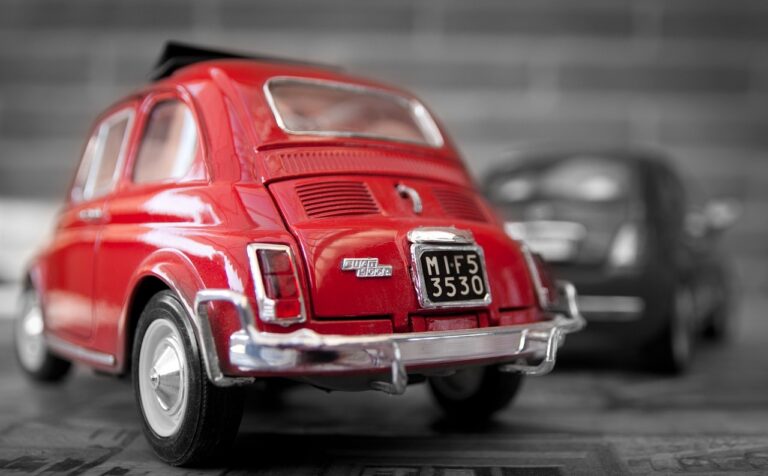Analyzing the Role of Artificial Intelligence in Automotive Seat Design Optimization
all panel 777, lesar247, 99 exch:Analyzing the Role of Artificial Intelligence in Automotive Seat Design Optimization
Automotive seat design plays a crucial role in ensuring the comfort and safety of drivers and passengers. With the advancement of technology, designers are turning to artificial intelligence (AI) to optimize the design process and create seats that are not only comfortable but also aesthetically pleasing and efficient. In this article, we will delve into the role of AI in automotive seat design optimization.
Understanding the Importance of Seat Design Optimization
Before we dive into the specifics of how AI is revolutionizing automotive seat design, it is essential to understand why seat design optimization is crucial. A well-designed seat can make a significant difference in the driving experience, reducing fatigue and increasing safety. Factors such as ergonomics, material selection, and cushioning play a vital role in creating a seat that provides optimal support and comfort.
Traditional Methods vs. AI in Seat Design Optimization
Traditionally, automotive seat design optimization relied heavily on manual processes and human expertise. Designers would spend hours analyzing data, conducting tests, and making adjustments to create the perfect seat. However, with the advent of AI, this time-consuming process has been streamlined significantly.
AI algorithms can process vast amounts of data in a fraction of the time it would take a human designer. By analyzing factors such as body dimensions, pressure points, and seating preferences, AI can quickly generate optimized seat designs that meet the needs of a diverse range of users.
Utilizing AI for Material Selection
One area where AI has significantly impacted automotive seat design optimization is in material selection. The choice of materials plays a crucial role in determining the comfort, durability, and aesthetic appeal of a seat. AI algorithms can analyze the properties of various materials and recommend the best options based on specific design requirements.
By considering factors such as breathability, moisture-wicking properties, and impact resistance, AI can help designers choose materials that enhance the overall performance of the seat. Additionally, AI can predict how different materials will interact with each other, enabling designers to create innovative combinations that maximize comfort and durability.
Optimizing Cushioning and Support
Another key aspect of automotive seat design optimization is cushioning and support. AI algorithms can simulate the effects of different cushioning materials and configurations on pressure distribution and comfort. By running virtual tests, designers can identify the most effective cushioning solutions for specific body types and driving conditions.
AI can also help optimize the support structures within the seat to minimize fatigue and reduce the risk of musculoskeletal disorders. By analyzing data from sensors embedded in the seat, AI algorithms can recommend adjustments to the design to ensure optimal posture and support for the driver and passengers.
Enhancing Aesthetic Appeal
In addition to optimizing comfort and functionality, AI can also help enhance the aesthetic appeal of automotive seats. By analyzing design trends, customer preferences, and brand identity, AI algorithms can generate seat designs that are not only visually appealing but also align with the overall aesthetic of the vehicle interior.
AI can suggest innovative shapes, patterns, and finishes that elevate the design of the seat and create a cohesive look with other interior elements. By combining creativity with data-driven insights, designers can create seats that stand out in terms of both form and function.
The Future of AI in Automotive Seat Design Optimization
As AI continues to evolve, its impact on automotive seat design optimization is expected to grow significantly. With advancements in machine learning and predictive modeling, AI algorithms will become even more adept at analyzing complex data sets and generating optimized design solutions.
In the future, we can expect AI to play a more significant role in personalizing seat designs to meet the unique needs of individual users. By integrating biometric sensors and real-time feedback mechanisms, seats could automatically adjust their configuration to provide optimal comfort and support for each driver and passenger.
Furthermore, AI algorithms could leverage data from connected vehicles to analyze how environmental factors such as temperature, humidity, and road conditions impact seating comfort. By continuously learning and adapting, AI-powered seats could enhance the overall driving experience and promote driver well-being.
FAQs
1. How does AI analyze body dimensions for seat design optimization?
AI algorithms use data from anthropometric studies and virtual simulations to analyze body dimensions and pressure points. By correlating this data with seating preferences and comfort levels, AI can generate customized designs that cater to a wide range of users.
2. Can AI help reduce the environmental impact of automotive seat design?
Yes, AI can help designers choose materials that are sustainable, recyclable, and environmentally friendly. By analyzing the life cycle of materials and their impact on the environment, AI algorithms can recommend eco-friendly alternatives that meet performance requirements.
3. What role does AI play in manufacturing automotive seats?
AI can optimize the manufacturing process by analyzing production data, identifying inefficiencies, and streamlining operations. By implementing AI-driven quality control measures, manufacturers can ensure that each seat meets the highest standards of safety and performance.
4. How can AI enhance the safety features of automotive seats?
AI algorithms can analyze crash test data and simulate the effects of impacts on seat structures and materials. By identifying weak points and recommending reinforcement strategies, AI can help designers enhance the safety features of seats and protect occupants in the event of a collision.
5. Will AI replace human designers in automotive seat design?
While AI can automate many aspects of the design process, human creativity and expertise will continue to play a crucial role in shaping the future of automotive seat design. By working in synergy with AI algorithms, designers can leverage the power of technology to create seats that combine innovation, comfort, and style.
In conclusion, AI is revolutionizing automotive seat design optimization by streamlining the design process, enhancing comfort and functionality, and promoting innovation. As AI continues to advance, we can expect to see a new era of personalized, sustainable, and technologically advanced seats that redefine the driving experience for years to come.






